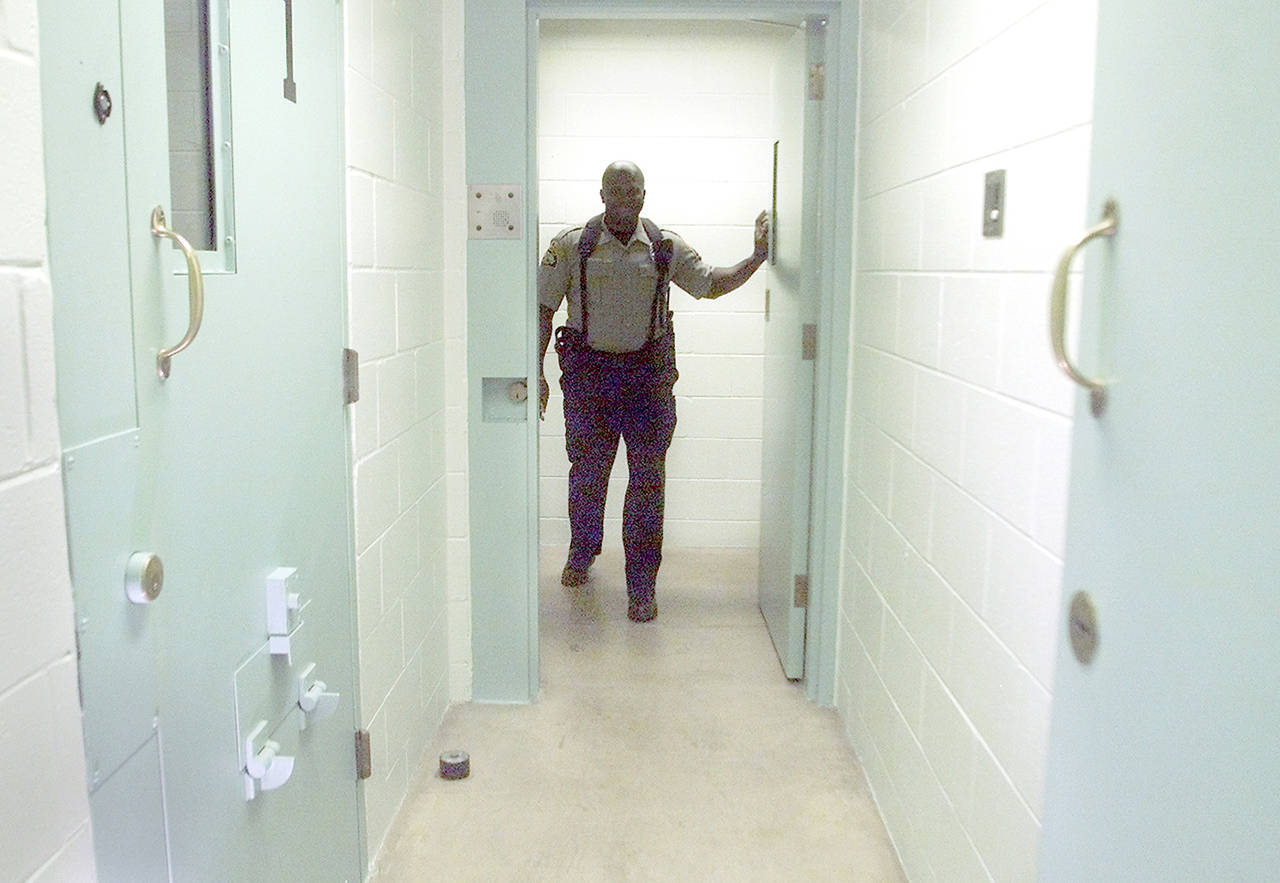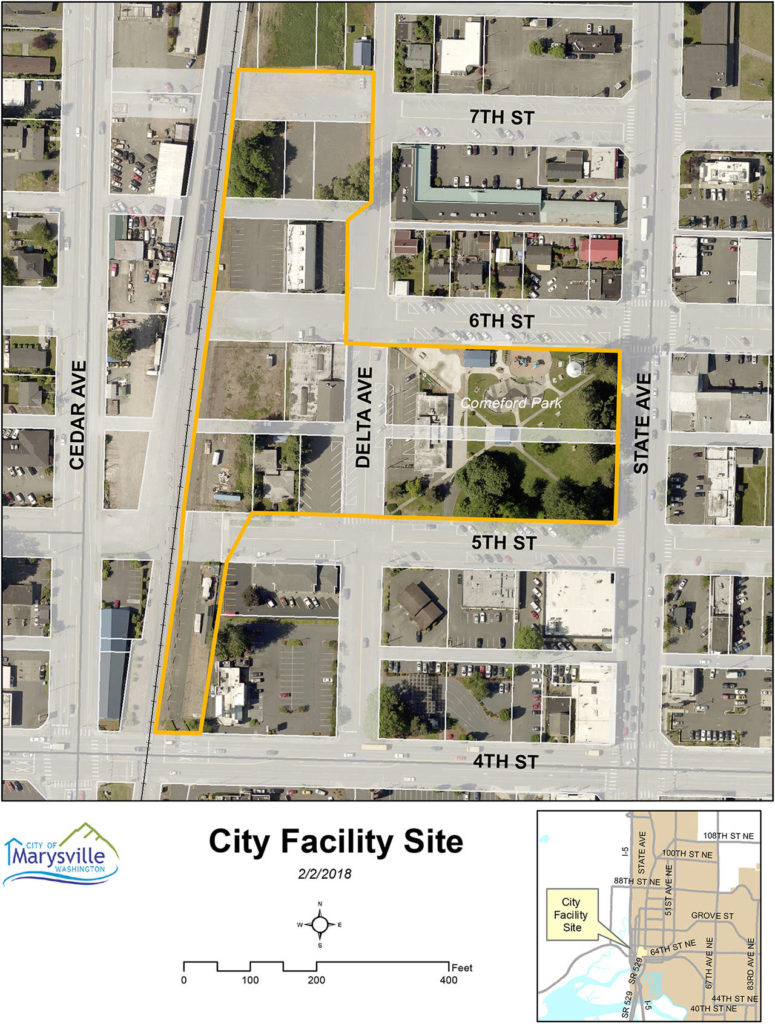MARYSVILLE — The ballot measure could have much more far-reaching effects on Marysville than building a new police station.
Its ripples could open up more residential and commercial development along the waterfront and bring together city operations in the historic downtown on 6 acres being purchased along the railroad tracks between Fourth and Seventh streets.
The Marysville City Council is expected to decide Monday whether to ask voters this summer to approve a sales tax increase to support public safety. A draft copy of the resolution calls for a one-tenth of 1 percent increase to the sales tax. That would generate about $800,000 a year and would help pay for a new $23 million police station and city jail.
A “yes” vote in August also would set in motion a number of moving parts that could greatly alter the city’s appearance.
The police station and jail would be built along State Avenue near Comeford Park, a prominent patch of the city’s past named after city father James Comeford, who ran a trading post in the 1870s.
At 46,000 square feet, the station would be much roomier than the current digs, also paid for by a voter-approved ballot measure. It opened more than 30 years ago when the city’s population was around 8,000. By 2017, Marysville’s population was 67,626, according to U.S. Census Bureau estimates. It is expected to reach 88,000 by 2035.
Just like the town itself, the police department has grown, city manager Gloria Hirashima said. There are 98 employees working shifts around the clock. The new building could accommodate 110 people per shift.
“That current building is just not big enough to hold the operations,” she said. “They are bursting at the seams.”
The jail would cover more than 19,000 square feet. It would be 380 percent larger than the existing one and have 50 cells to house 110 inmates being held on misdemeanors.
Plans also call for the city’s municipal court, now on State Avenue, to be moved to the new campus.
With the potential move of the police department, discussions are under way about the possibility of bringing the fire district offices back to the public safety building off Grove Street.
City Hall, also on State Avenue, would move into a new building of its own near the police department. So would engineers and planners now stationed in a public works building off Columbia Avenue east of Highway 529 near the Ebey Slough waterfront. The estimated cost of a city administration building is $20 million. It would cover 45,000 square feet. A new community center also is part of the civic campus plan.
A public works maintenance yard would relocate from near the waterfront to city-owned land on 47th Avenue NE, near Parr Lumber and what once was a Coca Cola plant.
The more than 15 acres of city-owned land east of Highway 529 where the Garka Mill once operated likely would be sold to private developers for a mix of housing and commercial businesses. It is land along Ebey Slough.
Although the existing Ken Baxter Community Center building would be torn down, much of Comeford Park would stay untouched. That includes the new spray park and the 120-foot-tall water tower, circa 1921.
For many years, the city has been buying up land off Delta Avenue along the railroad tracks for the civic campus. Those tracts include the old Flapjack Restaurant, a nursery and other properties. It also leased land to a church. The city is negotiating for one more piece of property between Fourth and Seventh streets and looking at land up to Eighth Street.
Many city workers in offices along State Avenue are accustomed to the sound of passing trains. Hirashima doesn’t expect it to be a problem to have city operations even closer to the tracks.
“You might have to pause, but you work around those things,” she said.
If voters approve the public safety measure in August, construction could begin on the new police station and jail in 2019.
An architect — Botesch, Nash & Hall Architects of Everett — has been selected.
Hirashima described plans for a civic campus as a homecoming of sorts.
What is now the Ken Baxter Community Center once housed City Hall, police, the jail and the council chambers. The plan, she said, marks a return to the town square of historic Marysville.
Eric Stevick: 425-339-3446; stevick@heraldnet.com.
Talk to us
> Give us your news tips.
> Send us a letter to the editor.
> More Herald contact information.



























